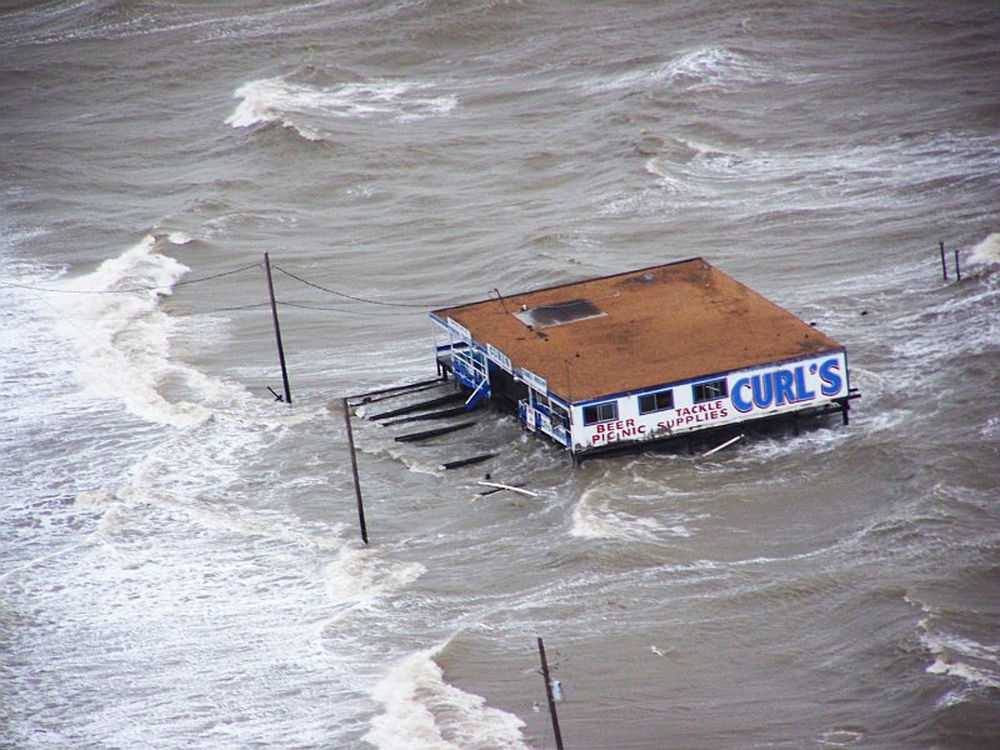Breaking News
Can We Actually Stop Flooding Due to Climate Change?

If 2017 has shown the United States anything, it’s that climate change is having some drastic effects on coastal regions. Two large hurricanes have already hit the continental Untied States within a week of each other, and there are still two months left in this year’s hurricane season. NASA reports that wind speeds are 5% higher worldwide than they were in the 1980s, and hurricanes build power and speed earlier in their development than they did in the past. The reason for these changes is higher temperatures in the oceans and in the atmosphere in general. These changes are leading to more frequent flooding in the coastal areas. This article looks at the most effective ways to limit or stop flooding due to climate change.
Global warming is caused by particulate matter in the atmosphere. These particles can be carbon, methane, and even water. The increase in these particles in the atmosphere creates the greenhouse effect that does exactly what it sounds like it should do. The heavier blanket of particles in the atmosphere prevents heat energy from escaping back through the atmosphere, creating an Earth-sized greenhouse with higher temperatures inside of the atmosphere. The increase in temperatures makes evaporation greater, which puts more water and other particulates into the air through evaporation. This situation creates the cycle that we are currently in, where the temperature increases and the ice melts. The melting of ice caps means that more water is deposited into the oceans, and sea levels are rising. All of these issues are working together to create an all-out assault on the coastal areas of the world.
The National Oceanic and Atmospheric Administration (NOAA) reports that storms in general (not just coastal storms) are dropping more water than before. So, how can we control all of this extra water that causes increased flooding? The answer may involve using nature to help stop flooding due to climate change in the first place. One study shows that the use of marshes, grasses, sills, and oyster reefs prevent flooding from sea tides and storms better than cement sea walls and bulkheads. The marsh’s gradual incline and plant life dissipate the energy of sea swells more effectively than walls, which push the energy in a different direction and cause greater problems. Marshes also limit erosion and hold onto more carbon, which keeps it out of the atmosphere. These marshes also provide habitat for several animal and plant species. In 2011, data was collected following Hurricane Irene that showed that 76% of bulkheads were damaged, while areas that utilized marshes saw no shoreline damage. It is clear that the use of marshes is a superior form of flooding control, as well as a more beneficial option for the environment.
In landlocked cities, over paving and lack of proper drainage is making flooding a greater possibility when the larger amounts of water in the atmosphere drop. Some of the most effective options for combating these flooding scenarios is creating rain gardens, using better urban planning, and utilizing permeable pavement. Rain gardens are large bowls of vegetation with soils that allow the water to percolate down into the earth. These basins also provide water holding areas during heavy precipitation. Permeable pavement is a new product that absorbs water and allows it to drain into the soil, instead of pooling. Finally, urban areas require better planning to allow for the previously mentioned options, as well as others, to stop flooding due to climate change.
The ultimate way to stop flooding due to climate change would be to reduce the amount of particulate matter that we are putting into the atmosphere, and reverse the warming cycle that we are currently in. The reality is that the global environment is changing so much, that intermediate and high predictions of sea-level rise indicate that 489-668 coastal communities will be inundated with water by the year 2100. If this change is not acceptable to us, then we have to put aside partisan agendas and listen to what the science community has to say about climate change. More than ever before, it is getting harder to deny the effects of global warming, and a preventative approach is far preferred to a reactionary approach to stop flooding due to climate change.





0 comments